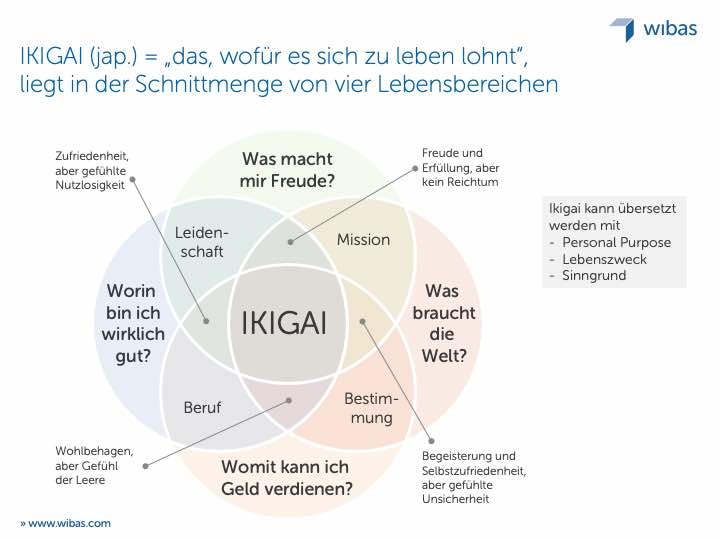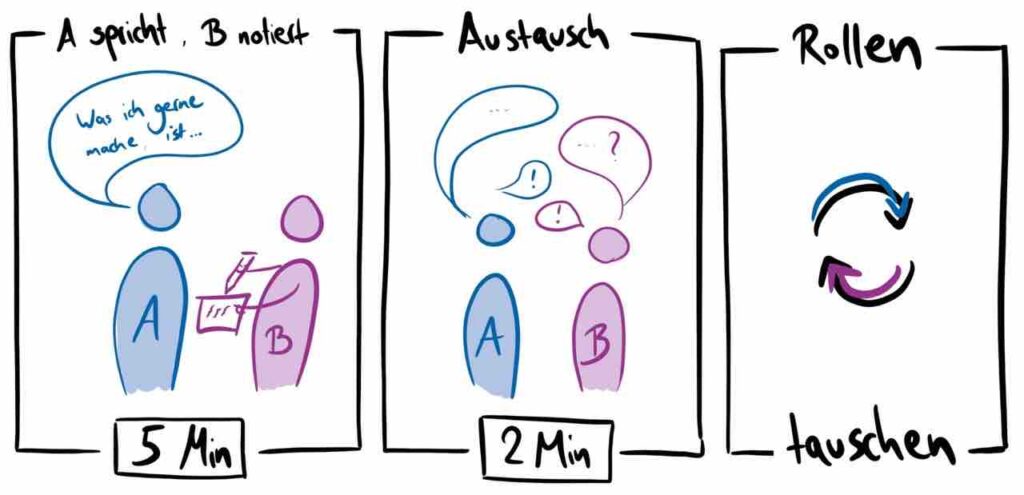When we came to our contribution to Motivation we stumbled across one word: Ikigai. While researching and writing, the paragraph on ikigai got longer and longer. So here's an extra post about another Japanese word and what it's all about.
May we introduce: Ikigai
The following quintessence can be drawn from our article on motivation: Intrinsic motivation brings with it more positive emotions. This can help us to experience flow. The things that drive and motivate us will be answered very differently by each individual. It all depends on what we enjoy and what arouses our interests. This knowledge can in turn help us to find or become aware of our ikigai.
Ikigai is Japanese and is made up of iki = life and gai = value. It therefore means the value of life, or more loosely translated "that which is worth living for" and lies at the intersection of the four areas of life: passion, mission, profession and purpose.

An overlap of all four areas is the ideal state, our ikigai: we burn for something that we are good at, that the world can use and for which we are paid. Behind Ikigai are topics such as satisfaction, personal responsibility, motivation and the development of potential, which are just as important for individuals as they are for teams and organizations.
Where does Ikigai come from?
The term ikigai comes from Okinawa, a place in Japan where the most centenarians in the world live. In addition to things like their diet and exercise, they blame Ikigai for their long life, because: Ikigai doesn't stop. There is no end point we arrive at, no goal to reach. It is the fire that burns within us and drives us forward. It is by no means always simple or easy to pursue it. Ikigai is constant work - work that fulfills us.
For this reason, many of the old and very old people in Okinawa continue to work, sometimes six days a week, as their ikigai consists of this very work. For example, they take care of bashōfu, the traditional production of cloth from banana leaves. Bashōfu is not a simple, monotonous activity. You have to deal with new questions and tasks every day. It requires concentration on detail, variations on what was done yesterday, a mixture of stability and variety. By practicing their ikigai, they keep their fire burning - which in turn allows them to pursue their ikigai. *
Ikigai is therefore the reason for our existence, the art of unconditionally and relaxedly doing what means something to us, what makes us happy and not being stressed or distracted in the process.
Exercise for your ikigai
Finally, we cordially invite you to take part in a short exercise to get to grips with your ikigai. You will need about 75 minutes and someone you feel comfortable talking to.
Agree on openness and confidentiality for your conversation. Go through the individual areas of your life in turn by answering the four questions from the model:
- What do I really like doing?
- What am I really good at?
- What can I get paid for?
- What does the world need?
Take 15 minutes for each question and discuss it according to the following discussion pattern:
- Person A speaks, person B silently notes key points (5min)
- Exchange between person A and B (2min)
- Person B speaks, person A silently notes key points (5min)
- Exchange between person A and B (2min)

Finally, take a look at your ikigai. What could be in the central cutting area? Again, take 15 minutes for this. You can come up with something concrete or something abstract.
We hope you enjoy trying them out!
*If you would like to know more about the lives of centenarians and their stories, we recommend the book "Das kluge, lustige, gesunde, ungebremste, glückliche, sehr lange Leben: The Wisdom of Centenarians. A journey around the world" by Klaus Brinkbäumer and Samiha Shafy.

Write a comment